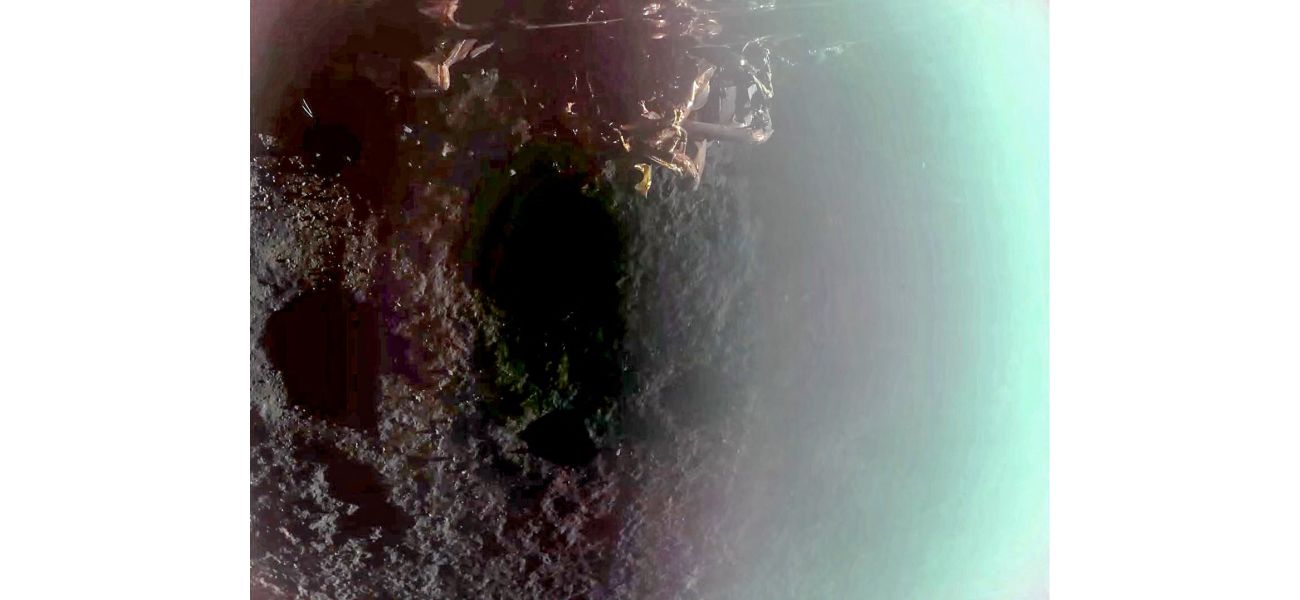A private company has achieved a successful Moon landing for the first time.
A spacecraft called Blue Ghost arrived as planned and has already begun transmitting pictures.
March 2nd 2025.

Today marks a momentous occasion in the realm of space exploration as Firefly Aerospace successfully landed their spacecraft on the Moon, becoming the first private company to achieve such a feat. It's a remarkable achievement, especially considering that even governments have struggled with soft landings in the past. This exciting milestone has sparked hope for new discoveries and insights about our cosmic neighborhood.
However, Firefly is not the first private company to have attempted a lunar landing. Last year, Intuitive Machines successfully landed their spacecraft, Odysseus, on the Moon. While it was able to transmit data and work with NASA, it unfortunately broke a leg and tipped over. This serves as a reminder of the challenges and risks involved in space exploration. That's why Firefly is celebrating this historic accomplishment, as they have become the first commercial company to achieve a fully successful Moon landing. This is a giant leap in the world of commercial exploration.
Unlike the Apollo 11 landing in 1969, which was met with worldwide attention, Firefly's landing didn't receive as much fanfare. However, this successful mission means that NASA is officially back in the business of lunar exploration after a long hiatus. In the past, the Moon was simply something we looked at in the sky, but now it has become a destination for scientific research and potential human presence.
NASA paid £115 million for the technology and delivery of the Blue Ghost lander, with the hopes of learning more about the lunar environment and supporting future astronauts on the Moon and Mars. The lander is equipped with a vacuum to collect moon dirt for analysis and a drill to measure temperature up to 10ft below the surface. These tools will be used in ten experiments to study the lunar conditions. The data collected from these experiments could pave the way for a more permanent human presence on the Moon, rather than just a quick visit.
Blue Ghost was launched from Florida in mid-January and is part of NASA's commercial lunar delivery program. This mission is crucial in preparing for future human exploration of the Moon, and it is hoped that by involving private companies, space exploration will become more cost-effective and efficient. According to Ray Allensworth, a member of the Firefly team, the lander landed safely this morning, skillfully navigating past hazards such as boulders. The team is currently analyzing data to determine the exact location of the lander, but all indications suggest it landed within the 328-foot target zone in Mare Crisium.
The lander is expected to operate for two weeks before shutting down during the lunar nighttime. Intuitive Machines, another private company, is set to land their 15ft device on the Moon on Thursday, aiming for the bottom of the Moon, just 100 miles from the south pole. A third private company, ispace, is scheduled to land their lander in three months' time. This company shared a rocket ride with Blue Ghost and took a longer, more challenging route.
Both Intuitive Machines and ispace have attempted lunar landings before, with the former's first lander crashing in 2023. NASA's top science officer, Nicky Fox, shared that the space agency plans to continue this pace of two private lunar landings per year, understanding that some missions may not be successful. This determination and persistence will ultimately lead to groundbreaking discoveries and advancements in space exploration.
However, Firefly is not the first private company to have attempted a lunar landing. Last year, Intuitive Machines successfully landed their spacecraft, Odysseus, on the Moon. While it was able to transmit data and work with NASA, it unfortunately broke a leg and tipped over. This serves as a reminder of the challenges and risks involved in space exploration. That's why Firefly is celebrating this historic accomplishment, as they have become the first commercial company to achieve a fully successful Moon landing. This is a giant leap in the world of commercial exploration.
Unlike the Apollo 11 landing in 1969, which was met with worldwide attention, Firefly's landing didn't receive as much fanfare. However, this successful mission means that NASA is officially back in the business of lunar exploration after a long hiatus. In the past, the Moon was simply something we looked at in the sky, but now it has become a destination for scientific research and potential human presence.
NASA paid £115 million for the technology and delivery of the Blue Ghost lander, with the hopes of learning more about the lunar environment and supporting future astronauts on the Moon and Mars. The lander is equipped with a vacuum to collect moon dirt for analysis and a drill to measure temperature up to 10ft below the surface. These tools will be used in ten experiments to study the lunar conditions. The data collected from these experiments could pave the way for a more permanent human presence on the Moon, rather than just a quick visit.
Blue Ghost was launched from Florida in mid-January and is part of NASA's commercial lunar delivery program. This mission is crucial in preparing for future human exploration of the Moon, and it is hoped that by involving private companies, space exploration will become more cost-effective and efficient. According to Ray Allensworth, a member of the Firefly team, the lander landed safely this morning, skillfully navigating past hazards such as boulders. The team is currently analyzing data to determine the exact location of the lander, but all indications suggest it landed within the 328-foot target zone in Mare Crisium.
The lander is expected to operate for two weeks before shutting down during the lunar nighttime. Intuitive Machines, another private company, is set to land their 15ft device on the Moon on Thursday, aiming for the bottom of the Moon, just 100 miles from the south pole. A third private company, ispace, is scheduled to land their lander in three months' time. This company shared a rocket ride with Blue Ghost and took a longer, more challenging route.
Both Intuitive Machines and ispace have attempted lunar landings before, with the former's first lander crashing in 2023. NASA's top science officer, Nicky Fox, shared that the space agency plans to continue this pace of two private lunar landings per year, understanding that some missions may not be successful. This determination and persistence will ultimately lead to groundbreaking discoveries and advancements in space exploration.
[This article has been trending online recently and has been generated with AI. Your feed is customized.]
[Generative AI is experimental.]
0
0
Submit Comment





